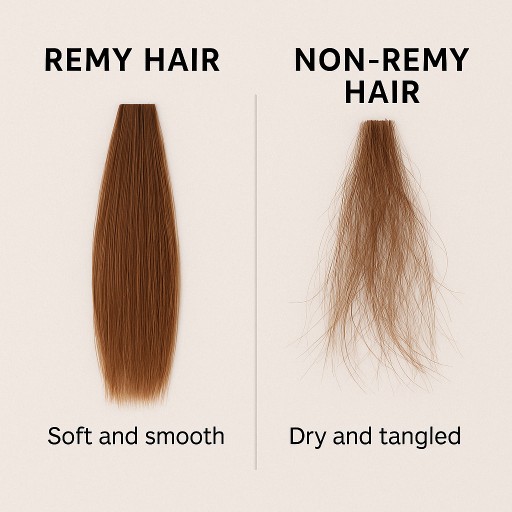Are you new to the world of hair extensions? Having trouble deciding between the vast offering of weft designs and attachment styles? Maybe you’ve tried clip ins before and you’re looking to branch out? Perhaps you’re looking for a simple solution to your hair length woes?
Don’t worry, we know that hair extensions can be confusing and overwhelming to begin with! Even those with experience can get a little lost when it comes to trying new varieties. We’ve all been there before, and we want to make sure that your hair extension journey is as smooth and straightforward as possible. That’s why in this blog post, we’ve rounded up all the key information about our clip in and tape in Remy hair extensions to help guide you. We’ve listed out the main pros and cons of each style, so that you can choose the right option for your needs and goals!
Clip In Extensions
Introducing the go-to choice for those seeking instant length and volume. Clip in hair extensions are easy-to-use and commitment free, making them ideal for beginners or for people that like to switch up their hairstyles frequently.
Clip In Pros
- Convenient. Clip ins can be applied in under 10 minutes, styled in limitless ways, and easily removed at the end of the day.
- Straightforward. Simply snap open the clips on the weft of the hair extension, slide into your natural locks at the root, and pop the clip closed against your scalp.
- Versatile. Remy hair (human hair) can be heat styled the same as your natural hair, just make sure to use protective products and lower temperatures to ensure longevity.
- Effortless. Because clip in extensions are applied and removed on a daily basis, you are still able to access your scalp during your usual wash routine. You also don’t need the help of a salon professional to remove and reapply your extensions.
Clip In Cons
- Temporary. Whilst this is ideal for people who enjoy the duality of their natural hair and wearing extensions daily, people with a busier lifestyle may prefer a style that they can keep for longer periods.
- Discomfort. Hair extensions add extra weight to your scalp. If you are sensitive to tension, you may need to opt for lighter wefts or shorter lengths. You can also wear your clip ins for a shorter amount of time or take breaks between each use.
Tape In Extensions
Say hello to the longer lasting hair extension solution. Tape in extensions attach to your natural locks using a medical grade adhesive, making them a semi-permanent option to be applied and removed by a trained professional.
Tape In Extension Pros
- Long lasting. Once applied, you don’t need to worry about reattaching for up to 8 weeks. That means you get to enjoy the beauty of thick, long locks 24/7.
- Comfortable. The LiteTape® design sits flat against your scalp, meaning your hairstyles are bump free.
- Customizable. The number of packs you need depends on your hair’s natural thickness, meaning that even those with fine hair can enjoy the appearance of longer locks.
- Low maintenance. You can wash and style your tape in extensions almost the same as your natural locks, simply take extra care around the roots to not disturb the tape strips.
- Reusable. Once your tape in extensions have grown out, they can be reattached by changing the tape adhesive and moving up the hair strand. This makes them a sustainable and cost-effective solution.
Tape In Cons
- Visibility. If the tape in extensions aren’t installed correctly, the tapes can be visible at the root.
- Removal process. Removing the glue from your hair requires the proper tools and some patience. They should never just be pulled out, as this will cause the loss of your natural hair.
- Damage. Again, only if the extensions are improperly installed will damage become an issue. Your stylist should be fully qualified, and if you experience any problems throughout the application process or during general wear, be sure to let them know.
Hair Extension Tips and Tricks
Always opt for high quality Remy hair extensions over cheaper, synthetic alternatives. Synthetic hair tangles and sheds at a much faster rate, and has an unnatural appearance which doesn’t blend well with your natural locks. Synthetic hair is also at risk of melting or frazzling during heat styling, so it’s best to avoid.
Handle your hair extensions with care when they’re not in use, being sure to store them properly to avoid matting. With tapes or other extensions that you sleep in, invest in a silk bonnet or pillowcase, and tie your locks in a loose braid. Clean your scalp thoroughly before application of semi-permanent hair extensions, as you don’t want oils to interfere with the efficiency of attachment.
We hope this provides you with a better understanding of the world of clip in and tape in hair extensions. If you have any questions that remain unanswered, don’t hesitate to get in touch with our friendly team of experts. We’re always happy to answer any questions or product queries that you may have!






